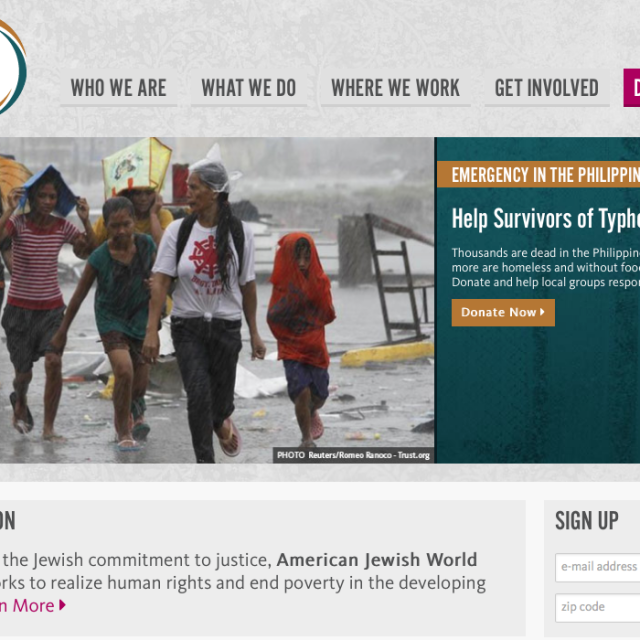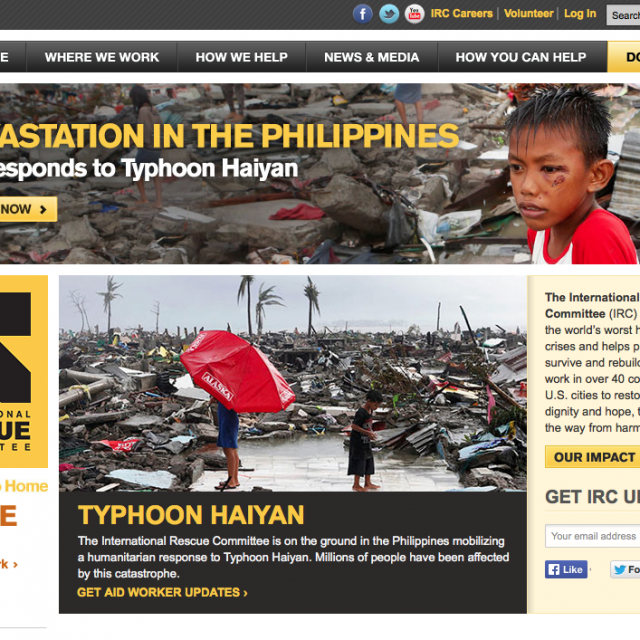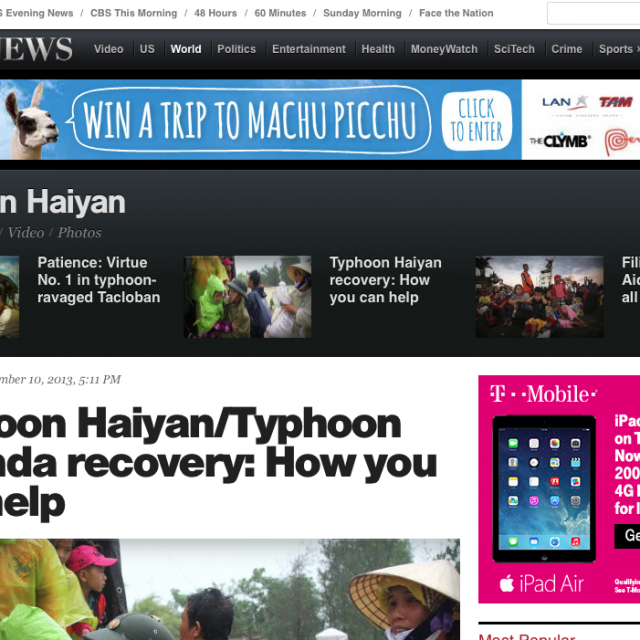
PERSONAL STORY From Dr. Luis Calingo, President of Woodbury University, Monday, Nov. 11: Dear friends, Thank you for your expressions of concern regarding the situation in the Philippines, and I apologize for this group reply. My wife Gem and I arrived in Manila on Friday morning (11/8), the same day that Super-Typhoon Haiyan (locally referred to as “Yolanda”) arrived in the Philippines. In a nutshell, Gem and I, as well as our respective friends and relatives, are safe and unhurt. The super-typhoon was in the Philippines for only two days, but left behind the devastation that you would have seen on TV or read on the news. The Philippines is an archipelago of 7,107 islands, divided into three major island groups (Luzon in the north, Visayas in the middle, and Mindanao in the south). Manila is in the main island of Luzon and has been spared; it was the Visayas islands that Yolanda ravaged.

Another typhoon–the 25th for this year–has just entered the Philippines and made landfall in the southern island of Mindanao. Although Gem and I have friends and relatives in Mindanao, we believe that they are safe. The heaviest damage occurred in the city of Tacloban in the province of Leyte, the island where General MacArthur landed when the Americans liberated the Filipinos from the Japanese in WWII. Tacloban is a highly urbanized city and, until recently, had been ranked the country’s fifth most competitive city. None of its built structures escaped Yolanda’s wrath. Its airport–the 8th busiest in the country–was completely destroyed, making it extremely difficult for relief operations to take place. The death toll in this city alone is expected to run up to 10,000. There is no functioning local government because the city officials are among the victims.

The country has been visited by a major earthquake and 24 typhoons this year. Not to diminish the damage done, the Filipinos are a very resilient people and these events will not make them lose their “trademark” smiles. These calamities bring home to reality of climate change. I recall when I was growing up that the typhoon season would end sometime in September and that not all letters of the alphabet would be used when naming the typhoons. The last time that I recall a typhoon with a local name starting with “Y” was in 1970. Gem and I look forward to being back in SoCal this Saturday evening and hope you will join us in supporting typhoon relief efforts by financially donating to the relief organizations below or donating clothes and unexpired prescriptions to our donation center on campus. Best regards, Dr. Luis Ma. R Calingo, President Woodbury University
FROM DR. CALINGO’S FACEBOOK PAGE: NOVEMBER 13
ANALYSIS AND PROPOSED STRATEGIC APPROACH TO THE TYPHOON RELIEF OPERATIONS
Analysis
Consider the following description of the magnitude of the problem of the relief operations. The people of Tacloban City, Leyte, number about 220,000. Let us assume that they need 2.0 kilograms of food and water per person per day. You have to supply about 440,000 kg per day of food and water to the area—440 tons per day. There are two C-130 Hercules aircraft trying to do this in an airport, which is only operational for 12 hours (only during daytime as there is no electric power). The capacity of these aircraft is 30 tons per trip; therefore, they have to do about 15 roundtrips for the 12 hours. Each way takes about 1.5 hours from Manila to Tacloban. Each round trip will, therefore, take four hours, with quick loading and unloading in both airports. So both C-130 aircraft can only do six round trips per day. We need at least five C-130 aircraft just for Tacloban City if Manila will continue to be the origin of these flights!
Now this is only for food and water. What about medicines? And what about the other areas: Basey, Guiuan, Ormoc, Palo, and Tolosa? If you include the population of the other areas, say 500,000 people total. (The UN reported that about 10 million people have been displaced.) Then add the trucks required to ferry the relief goods from the airport to the distribution centers.
The national hub for these relief efforts have recently been moved from Manila to Cebu City to cut down on travel time. Even if this hub relocation cuts the turnaround time by half (i.e., from four to two hours), two C-130 aircraft still won’t cut it! The Philippine government just does not have the assets to accomplish what is required.
What to do?
Proposed Strategic Approach
At the risk of armchair-theorizing, let me offer my visceral reaction based on my own limited knowledge coming from the news that I have been reading and watching during my almost one week here in Manila.
The Philippine government needs to treat this as a large-scale supply chain and logistics problem (aka rapid movement of goods and services) under conditions of broken infrastructure. There are two areas that should be the initial focus. The first is to create the minimal transportation and communication infrastructure to enable relief operations. The airport must be functional 24 hours a day; it should be cleared of debris and corpses and power (albeit from generators) need to be installed to enable 24-hour delivery of supplies from Cebu. A second area—corollary to the first–is to create on-the-ground conditions that would prevent further illness and damage. As insensitive as this may sound, all corpses need to be located, collected, “catalogued” in a database with identifying characteristics, and buried in mass graves. This should be done ASAP or else gastroenteritis (from contamination of ground and running water) and other diseases associated with decaying bodies, which will make it more difficult not only for the survivors, but also for the relief workers. Removing all the corpses will enable the immediate clearing of the airport and the roads.
Simultaneously with the above pre-tasks, architects and engineers should design standardized large-scale temporary housing. With the above completed, heavy equipment can then be transported to the sites via air. Then instruct the military to create large-scale temporary shelters (in addition to the churches) to provide the victims a roof over their heads. During my MHS-BLISS days, we engaged the Philippine Army’s Corps of Engineers to build houses in the countryside. An engineering brigade can build these shelters, their power points, and the access roads to them…they’ve done this type of work before. It does not take long for architects and engineers to create standardized housing modules to make this happen…this too has been done before.
Then we get to the issue of preventing looting and ensuring that relief goods are distributed inan orderly manner. If martial law has not yet been declared in the disaster-struck areas, then that needs to be done. This is my 2 cents’ worth—again, based on my gut reaction—and I have barely scratched the surface. I have not included in this note the role of the US Navy deployment, which can bring the relief goods directly to the coastal towns devastated by the super typhoon. I am posting these suggestions on Facebook so that, hopefully through my Facebook friends, they may find their way to influencers and decision-makers. In the meantime, I will resume my “day job”—leading a university—starting next week, but will I still continue from home my concern for typhoon relief.
FROM AN EMAIL Q&A WITH DR. CALINGO: NOVEMBER 15
What are you experiencing firsthand, hearing and reflecting on what is important in the face of this devastating natural disaster?
I don’t know where or how to begin. There has been a high level of anxiety. Yolanda/Haiyan did her worst damage in only about 16 minutes! Although this occurred sometime Friday/Saturday, news about it had only been reported last Sunday. What is important to remember is that, although the coming of the super typhoon was predicted and that residents had prepared for it, the magnitude of the damage was not. I simply could not fathom 3.5 times Katrina, something for which we in the U.S. were not also adequately prepared.
The natural path of Philippine typhoons is to first hit the island provinces of Samar and Leyte (the easternmost provinces of the central Visayas region) and then proceed northwest toward the main island of Luzon. Yolanda/Haiyan, however, moved further west, touching island provinces (such as Palawan where the most beautiful resorts and scuba diving spots are) that have rarely been visited by typhoons. Even the island province of Bohol that was already hit by an intensity-7 earthquake last month (the equivalent of 32 Hiroshima bombs) was not spared by Yolanda/Haiyan; worse, it experienced another earthquake (4.8-magnitude) this week.
As a Filipino on the scene, what unique perspective can you offer to the Woodbury community about what is happening on the front lines? You are being honored for your life’s work and finding yourself in the midst of devastation. What encouragement can you provide to your brethren in the U.S. about how they can help?
Again, it’s hard to find the right words. I have stopped watching the news. Anderson Cooper has been doing a great job. I went to the University of the Philippines as a People’s Scholar. These are the same people who paid for my education from high school to my college years. This is one large-scale supply chain and logistics problem – and there is a dearth of such expertise in the Philippines. The few local logistics experts I know have offered to help, but they could not even get to the devastated areas! I feel somewhat guilty that I am leaving the country Saturday night, but I believe that I can be more helpful when I get there.
I have spent a lot of my free time contacting the relief organizations, including Caritas Manila, and my friends who have connections with relief organizations. In a way, this is due diligence on the ground. One of my fraternity brothers – a very good friend – is a senior VP of a conglomerate whose foundation has decided to adopt a village in the island province of Palawan. At least, in this case, the foundation will know exactly who will benefit from their donation.
Are you aware of Filipino-American groups that are uniting to mobilize the effort of supporting disaster relief efforts? (There is a Filipino-American community in Hollywood so we were just wondering if you had heard about what they might be doing.)
Yes. The Filipino and Filipino-American artists in Hollywood like Apl.de.ap Foundation International organized a Concert for Philippine Disaster Relief and The Filipino-America Chamber of Commerce of O.C. have a fundraiser Saturday November 15. There is a Philippine Typhoon Disaster Relief Drive at the Pasadena Rose Bowl on Wednesday, November 20.
HOW THE WOODBURY COMMUNITY CAN HELP
The best way to help those affected by the disaster is to make a cash donation to reputable relief and charitable organizations already working in the disaster zones. We have posted below some organizations that can help with your support. We’ve also started a donation drive on campus for charitable items. Please refer to the link of the “10 Worst Items to Donate” for guidance.
On the scene, there’s Caritas Manila:
The Catholic Charities organization in the Philippines; website: CARITAS
The New York Times outlined these giving opportunities: NYTIMES
Courtesy of CBS News, the list below includes organizations that are assisting in the recovery effort, with links describing how they help and how you can contribute monetarily. You may also want to consider the four-star organizations on the Charity Navigator roster of relief agencies.

The American Jewish World Service, the leading Jewish international development and human rights organization, is collecting funds to provide aid on the ground in the Philippines. The website is here.

AmeriCares is delivering medicines and medical supplies for typhoon survivors. They have team in the ground in the Philippines coordinating aid deliveries and assessing needs. The website is here.

Doctors Without Borders works in nearly 70 countries providing medical aid to those most in need regardless of their race, religion, or political affiliation, and are always involved in disaster situations with crucial medical care. The website is here.

The Helping Hand for Relief and Development organization is one of America’s highest rated Muslim charities, and has begun collecting donations for their relief efforts. The website is here.

There are also several clearinghouses for information on the numerous organizations providing assistance to Typhoon Haiyan relief efforts. One of the largest is InterAction. The website focusing on typhoon relief is here

The International Rescue Committee (IRC) responds to the world’s worst humanitarian crises and helps people to survive and rebuild their lives. They are sending teams to assist in the Philippines. The website is here.

The International Medical Corps’ Emergency Response Fund is a global, humanitarian, nonprofit organization dedicated to saving lives and relieving suffering through health care training and relief and development programs. They are gathering teams to send to the Philippines. The website is here.

Philippine Red Cross is working to ensure that everyone has access to the basics of life-food, water and temporary shelter. Your support has never been more needed. Give today. The website is here.

Mercy Corps is deploying some of its most seasoned emergency responders and will be working with partners on the ground to meet the urgent humanitarian needs of survivors. In the wake of one of the strongest storms in recorded history, families desperately need food, water, shelter and other basic supplies. The website is here.



 Loading Content
Loading Content 









